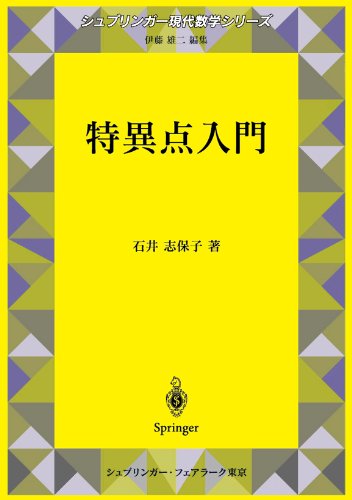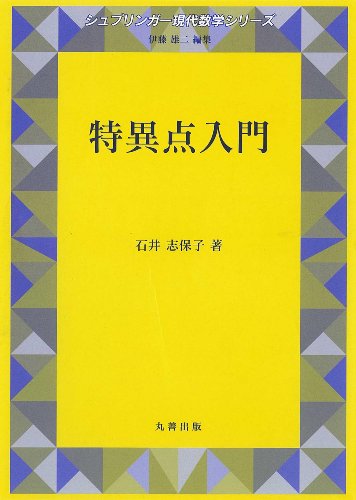1 0 0 0 OA ベーメの神秘思想とノヴァーリス(二)
- 著者
- 福島 正彦
- 出版者
- 大阪府立大学人文学会
- 雑誌
- 人文学論集 (ISSN:02896192)
- 巻号頁・発行日
- vol.12, pp.31-44, 1994-03-01
砂原教男教授停年退官記念
1 0 0 0 OA 同一視に関する最近の研究
- 著者
- 柏木 恵子
- 出版者
- 一般社団法人 日本教育心理学会
- 雑誌
- 教育心理学研究 (ISSN:00215015)
- 巻号頁・発行日
- vol.14, no.4, pp.230-245, 1966-12-31 (Released:2013-02-19)
- 参考文献数
- 141
- 被引用文献数
- 1 1
1 0 0 0 OA エディプス・コンプレ・ソクス(エレクトラ・コンブレ・ソクス)雑見
- 著者
- 野村 直壮
- 出版者
- サイコアナリティカル英文学会
- 雑誌
- サイコアナリティカル英文学論叢 (ISSN:03866009)
- 巻号頁・発行日
- vol.1980, no.3, pp.51-58, 1980-01-20 (Released:2011-03-11)
- 参考文献数
- 8
[I] Oedipus Complex A. (1) The outline of King Oedipus by Sophocles. (2) Oedipus did not know the murder of his father by himself, and succeeded to the father's throne, making his mother his own "Qeen" without any knowledge of the truth of these facts, and without never falling in love with his mother. It is only the destiney of the oracle by Apollo. As the resulting disaster in his dispair, he forced to make himself blind, exiled out of his ruling country. "The myth can be understood as a symble not of the incestuous love between mother and son but of the rebellion of the son against the authority of the father in the partriarchal family; that the marriage of Oedipus and Jocasta is only a secondary element, only one of the symbols of the victory of the son, who takes his father's place with it all his privileges. " (The Forgotton Language by Fromm p.202)B. Antigone by Sophocles. (Conscious Oedipus complex between father and son)[II] Electra Complex (Chiefly through My Mother-My Self by Nancy Friday)With the daughter's envy, and jealousy of her mother, (attached to the closeness to and the bymbosis to the mother), the girl wants to be loved by her father, taking the place of her mother. Father must love his daughter with his wife in love.
1 0 0 0 数学はいつも苦手だった
- 著者
- アルブレヒト・ボイテルスパッヒャー著 石井志保子訳
- 出版者
- 日本評論社
- 巻号頁・発行日
- 2004
1 0 0 0 特異点入門
- 著者
- 石井志保子著
- 出版者
- シュプリンガー・フェアラーク東京
- 巻号頁・発行日
- 1997
1 0 0 0 特異点入門
- 著者
- 石井志保子著 シュプリンガー・ジャパン編
- 出版者
- 丸善出版
- 巻号頁・発行日
- 2012
1 0 0 0 OA 大学図書館は動き続けているか COVID-19拡大に直面して Part2
- 著者
- 小陳 左和子
- 巻号頁・発行日
- pp.1-48, 2020-11-06
2020年11月6日(金) 私立大学図書館協会西地区部会京都地区協議会 第2回研究会
- 著者
- 隠岐 さや香
- 出版者
- 中央公論新社
- 雑誌
- 中央公論 (ISSN:05296838)
- 巻号頁・発行日
- vol.133, no.4, pp.42-47, 2019-04
- 著者
- 隠岐 さや香
- 出版者
- 日本科学史学会 ; 2014-
- 雑誌
- 科学史研究. [第Ⅲ期] = Journal of history of science, Japan. 日本科学史学会 編 (ISSN:21887535)
- 巻号頁・発行日
- no.295, pp.298-302, 2020-10
1 0 0 0 非家族的生活者の推移 (馬場啓之助前所長退任記念号)
- 著者
- 森岡 清美
- 出版者
- 国立社会保障・人口問題研究所
- 雑誌
- 季刊社会保障研究 (ISSN:03873064)
- 巻号頁・発行日
- vol.16, no.3, pp.p82-93, 1981-01
- 著者
- 小林 和雄 大高 泉
- 出版者
- 一般社団法人 日本科学教育学会
- 雑誌
- 日本科学教育学会年会論文集 30 (ISSN:21863628)
- 巻号頁・発行日
- pp.423-424, 2006-08-10 (Released:2018-05-16)
- 参考文献数
- 5
科学的な思考を科学的な探究(問題解決)の全過程における一連の思考と考えるならば,これらの諸過程における生徒の実態を把握することは科学的な思考力を育成するために不可欠である。その過程の主要な要素である仮説を設定するには「仮説」とは何かの認識が必要であり,そのような視座からAnton E. Lawsonらは未知の課題に対する問題解決のための仮説演繹的推論を行うには,「仮説」と「予想」の区別が重要であることを指摘している。本稿では,A E. Lawsonらが米国の高校と大学の生物教科書に対して実施した「仮説」と「予想」の定義に関する研究を参考にして,日本の中学生,高校生,大学生の「仮説」と「予想」に対する認識を質問紙法で調査したものである。その結果,A E. Lawsonらの定義するような「仮説」と「予想」の区別ができる生徒や学生は,非常に少ないことが明らかになった。
- 著者
- 楠川 充敏 鈴木 賢一 中井 孝幸
- 出版者
- 日本建築学会
- 雑誌
- 日本建築学会計画系論文集 (ISSN:13404210)
- 巻号頁・発行日
- vol.85, no.776, pp.2107-2117, 2020
<p> <b>1. Objectives</b></p><p> In Japanese universities, the realization of a new type of group learning environment, based on the use of analogic and digital media, has been promoted: Learning Commons (hereinafter, "LC").</p><p> Recently, examples of LC built separately from university library have increased. In the previous report, we conducted surveys in libraries where the reading area and the LCs are integrated, aiming to clarify the seat choice behavior of individual and group users. However, it was still to define if all the users actually choose only one of those two types, or if some of them rather choose both types.</p><p> For this reason, we tried to clarify the differentiated use behavior of reading areaff and LCs, aiming to acquire a useful knowledge for future learning space planning.</p><p> <b>2. Research method</b></p><p> We conducted a questionnaire survey and a behavior observation survey regarding the use status (addressed to users), and a questionnaire survey regarding the facility conditions (addressed to library staff).</p><p> The surveys were conducted in four Japanese universities: Sugiyama Jogakuen University, Ritsumeikan University, Chubu University, and Kyoto Sangyo University, which have different LC installation types. All of those institutions have more than 6,000 students and multiple departments. The different LC installation types have been identified as "integrated open type" (Sugiyama Jogakuen Univ.), "integrated separate type" (Ritsumeikan Univ.), "distributed combined type" (Chubu Univ.), "distributed independent type" (Kyoto Sangyo Univ.).</p><p> <b>3. Results</b></p><p> We noted that, as for the actual conditions, LC facilities have been built outside the library building in those universities where the number of students is larger.</p><p> Our hypothesis was that most of the single users tend to chose reading areas, and that most of the group users tend to chose LC; however, the results showed that around the 50% of the plural places users tend to choose both facilities, regardless of single or group use.</p><p> The analysis of this portion of users' behavior made clear that, between the reasons of their place choice, there are the possibility of using learning tools as PCs and copy machines, and the factor of nearness (LC facilities situated near the faculty building were largely used).</p><p> In the "distributed type", a large number of users chose both reading areas and LC because of the quiet environment. From this, it can be thought that by separating LC from the library building, it becomes possible to create various acoustic environments inside the vast surface obtained. Also in the "integrated open type", where there are no partitions between reading areas and LC, and where, within the same floor, there is a differentiation of quiet and lively spaces, many users' purpose was "to find a quiet environment". This behavior could only mean that the concept of "quietness" is not only linked to the absence of sound.</p><p> <b>4. Conclusions</b></p><p> From those considerations, it seems necessary to provide a differentiation in the sound environment of the learning spaces. Even by planning spaces where there is a sort of "noisy" acoustic condition, it becomes possible to increase the place choice factors of the users.</p>
- 著者
- 新関 公子
- 出版者
- 青月社 ; 2011-
- 雑誌
- 聚美
- 巻号頁・発行日
- no.34, pp.50-64, 2020
- 著者
- 稲垣 知子 土川 洋史
- 出版者
- 国立高等専門学校機構岐阜工業高等専門学校
- 雑誌
- 岐阜工業高等専門学校紀要 Memoirs of National Institute of Technology, Gihu College
- 巻号頁・発行日
- no.55, pp.41-48, 2020
1 0 0 0 デジタルアーカイブにおけるDOIなどの永続的識別子の利用(後編)
- 著者
- 時実 象一
- 出版者
- 日本薬学図書館協議会
- 雑誌
- 薬学図書館 = Pharmaceutical library bulletin (ISSN:03862062)
- 巻号頁・発行日
- vol.65, no.4, pp.198-204, 2020
1 0 0 0 デジタルアーカイブにおけるDOIなどの永続的識別子の利用(前編)
- 著者
- 時実 象一
- 出版者
- 日本薬学図書館協議会
- 雑誌
- 薬学図書館 = Pharmaceutical library bulletin (ISSN:03862062)
- 巻号頁・発行日
- vol.65, no.3, pp.115-120, 2020
1 0 0 0 国立国会図書館から自治のあり方を考える
- 著者
- 只野 雅人
- 出版者
- 三多摩図書館研究所
- 雑誌
- 図書館研究三多摩 (ISSN:13423886)
- 巻号頁・発行日
- no.10, pp.83-125, 2020




